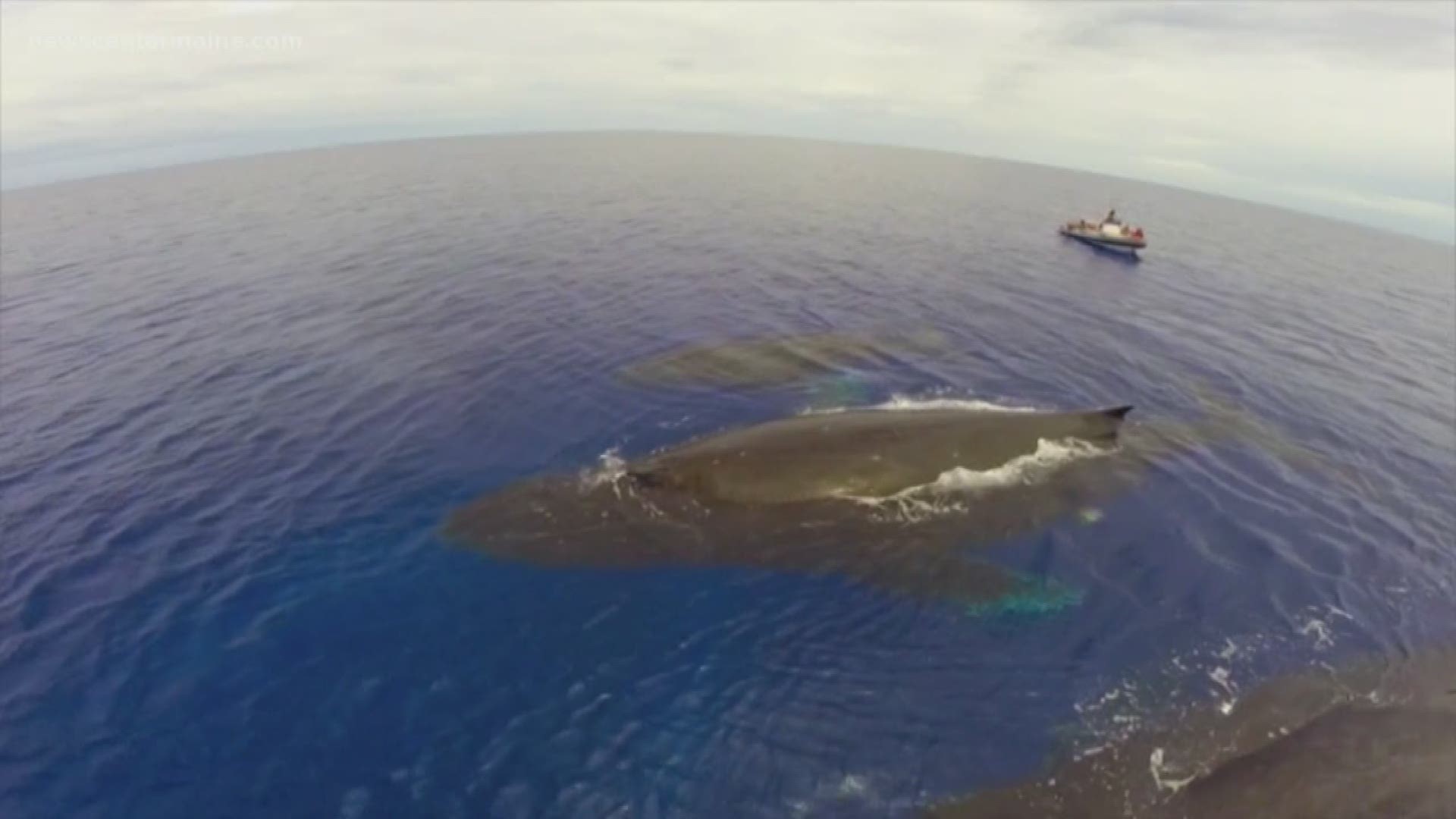AUGUSTA, Maine — A press release issued by The Maine Department of Marine Resources (DMR) says the proposal, in response to requirements under the Marine Mammal Protection Act and the Endangered Species Act, includes reducing the presumed risk of entanglement in lobster gear, while also minimizing the potential of serious injury and mortality if entanglement occurs.
Marine Resources Commissioner Pat Keliher announced the plan Friday morning and said it had already been sent to federal regulators in Washington.
With only about 400 North Atlantic right whales remaining, they are one of the world’s most endangered large whale species, and entanglement in fishing gear is a leading threat to their existence, according to the National Oceanic and Atmospheric Administration (NOAA). NOAA also says studies show that more than 85 percent of right whales have been entangled in fishing gear at least once, and 60 percent multiple times.
The proposed plan includes:
- Vertical line reductions
- Gear marking
- 1,700-pound weak points
- Harvester reporting
- Electronic tracking on federal vessels
- Request for conversation equivalency and an individual safety program
As in earlier proposals he suggested to the lobster industry, Keliher says the plan requires lobstermen in some areas—mostly farther offshore—to fish more traps on a line, called trawls. Trawls of up to 20 traps have been required in offshore areas for five years, he says, but the new plan will increase it to 25 traps. In some areas closer to shore the plan requires smaller trawls, but Keliher says many of those fishing inside the state 3-mile limit will be able to continue fishing as they do now, with very limited trawl requirements. They will, however, be required to add a section of weaker rope to their lines so they can break if snagged by a whale, and put in color-coded strips on the lines to identify them as Maine lobster lines.
“The majority of people who fish inside, where 75% of the gear is, they’re going to be happy,” Keliher says. “They’re not going to be impacted other than putting a weak point in their line and adding color-coding to their line for clarification where the gear is from.”
He says the primary focus of the plan is on offshore fishing ground, which is closer to where right whales are occasionally seen. He says a whale watch boat out of Bar Harbor spotted two of the whales last summer off Mount Desert Rock.
Maine lobstermen have staunchly opposed new restrictions, saying they are not causing harm to the right whale. But Keliher says he is convinced the state must take some action, or the federal government–which is under the threat of environmental lawsuits–will impose even tougher restrictions on Maine.
“We’re trying to find a way to alleviate risk while maintaining prosperity of the industry,” he says.
Asked if it is a risk to whales or to fishermen, Keliher said it is both.
“Because once you start changing trawl lengths and adding weak rope you have to take fishermen safety into account, and I put that at the highest most important thing we’re doing.”
Keliher says a key part of the state’s plan also would allow flexibility for managing the risk in specific areas, so his department could work with local fishermen to find alternatives if the standard regulations are not practical.
Now the state and the industry must wait for a response from the federal agencies, which could take months.
Read the complete proposal here.

